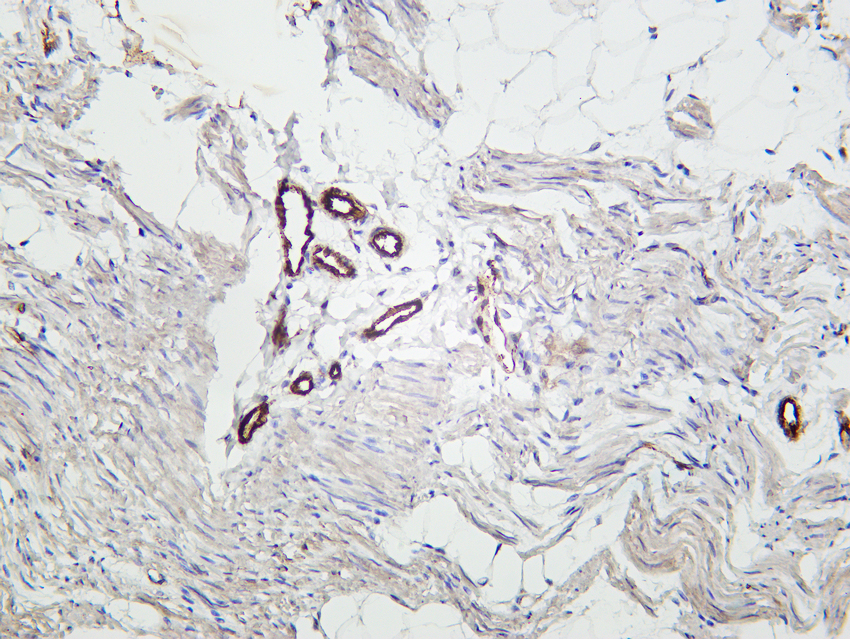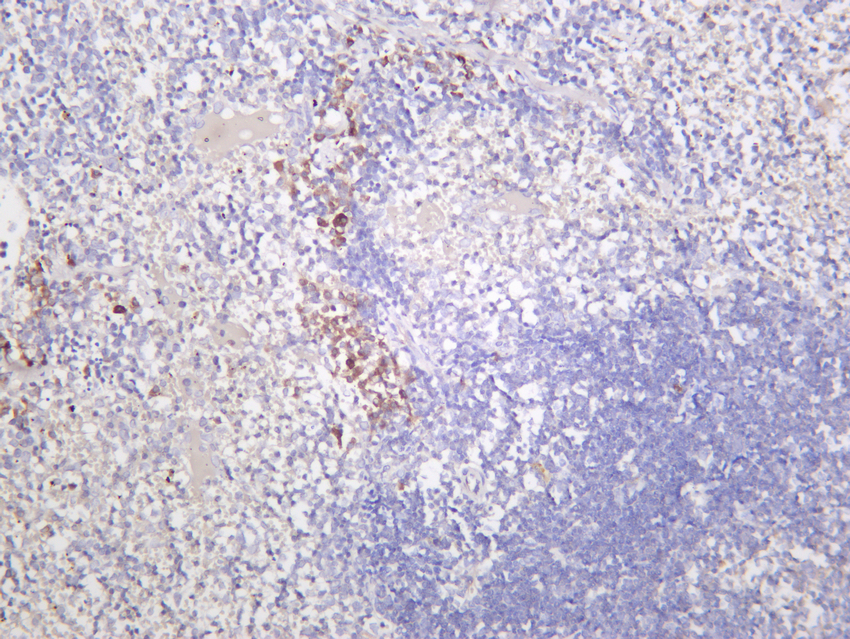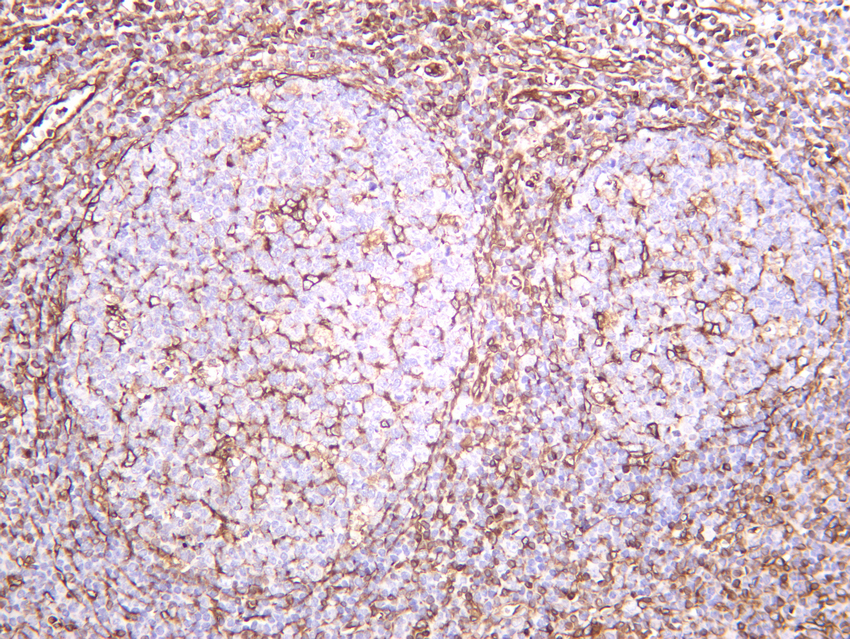TMEM173 (PT0135R) PT® Rabbit mAb
- Catalog No.:YM8076
- Applications:WB;IHC;IF;IP;ELISA
- Reactivity:Human;Mouse;Rat;
- Target:
- STING/TMEM173
- Fields:
- >>NOD-like receptor signaling pathway;>>RIG-I-like receptor signaling pathway;>>Cytosolic DNA-sensing pathway;>>Shigellosis;>>Human cytomegalovirus infection;>>Herpes simplex virus 1 infection;>>Human immunodeficiency virus 1 infection;>>Coronavirus disease - COVID-19
- Gene Name:
- TMEM173 ERIS MITA STING
- Protein Name:
- Transmembrane protein 173
- Human Gene Id:
- 340061
- Human Swiss Prot No:
- Q86WV6
- Mouse Gene Id:
- 72512
- Mouse Swiss Prot No:
- Q3TBT3
- Specificity:
- endogenous
- Formulation:
- PBS, 50% glycerol, 0.05% Proclin 300, 0.05%BSA
- Source:
- Monoclonal, rabbit, IgG, Kappa
- Dilution:
- IHC 1:200-1000,WB 1:1000-5000,IF 1:200-1000,ELISA 1:5000-20000,IP 1:50-200
- Purification:
- Protein A
- Storage Stability:
- -15°C to -25°C/1 year(Do not lower than -25°C)
- Other Name:
- TMEM173;ERIS;MITA;STING;Transmembrane protein 173;Endoplasmic reticulum interferon stimulator;ERIS;Mediator of IRF3 activation;hMITA;Stimulator of interferon genes protein;hSTING
- Molecular Weight(Da):
- 42kD
- Observed Band(KD):
- 37kD
- Background:
- This gene encodes a five transmembrane protein that functions as a major regulator of the innate immune response to viral and bacterial infections. The encoded protein is a pattern recognition receptor that detects cytosolic nucleic acids and transmits signals that activate type I interferon responses. The encoded protein has also been shown to play a role in apoptotic signaling by associating with type II major histocompatibility complex. Mutations in this gene are the cause of infantile-onset STING-associated vasculopathy. Alternate splicing results in multiple transcript variants. [provided by RefSeq, Sep 2014],
- Function:
- function:Acts as a facilitator of innate immune signaling. Able to activate both NF-kappa-B and IRF3 transcription pathways to induce expression of type I interferon (IFN-alpha and IFN-beta) and exert a potent anti-viral state following expression. May be involved in translocon function, the translocon possibly being able to influence the induction of type I interferons. May be involved in transduction of apoptotic signals via its association with the major histocompatibility complex class II (MHC-II). Mediates death signaling via activation of the extracellular signal-regulated kinase (ERK) pathway.,PTM:Phosphorylated on tyrosine residues upon MHC-II aggregation.,subunit:Associates with the MHC-II complex (By similarity). Interacts with DDX58/RIG-I, MAVS/VISA and SSR2.,tissue specificity:Ubiquitously expressed.,
- Subcellular Location:
- Cytoplasmic, Membranous
- Expression:
- Ubiquitously expressed. Expressed in skin endothelial cells, alveolar type 2 pneumocytes, bronchial epithelium and alveolar macrophages.
- June 19-2018
- WESTERN IMMUNOBLOTTING PROTOCOL
- June 19-2018
- IMMUNOHISTOCHEMISTRY-PARAFFIN PROTOCOL
- June 19-2018
- IMMUNOFLUORESCENCE PROTOCOL
- September 08-2020
- FLOW-CYTOMEYRT-PROTOCOL
- May 20-2022
- Cell-Based ELISA│解您多样本WB检测之困扰
- July 13-2018
- CELL-BASED-ELISA-PROTOCOL-FOR-ACETYL-PROTEIN
- July 13-2018
- CELL-BASED-ELISA-PROTOCOL-FOR-PHOSPHO-PROTEIN
- July 13-2018
- Antibody-FAQs
- Products Images

- Various whole cell lysates were separated by 4-20% SDS-PAGE, and the membrane was blotted with anti-TMEM173 (PT0135R) antibody. The HRP-conjugated Goat anti-Rabbit IgG(H + L) antibody was used to detect the antibody. Lane 1: Jurkat Lane 2: K562 Lane 3: Rat spleen Predicted band size: 42kDa Observed band size: 37kDa

- Rat colon was stained with Anti-TMEM173 (PT0135R) rabbit antibody

- Mouse spleen was stained with Anti-TMEM173 (PT0135R) rabbit antibody

- Rat spleen was stained with Anti-TMEM173 (PT0135R) rabbit antibody

- Human tonsil was stained with Anti-TMEM173 (PT0135R) rabbit antibody



